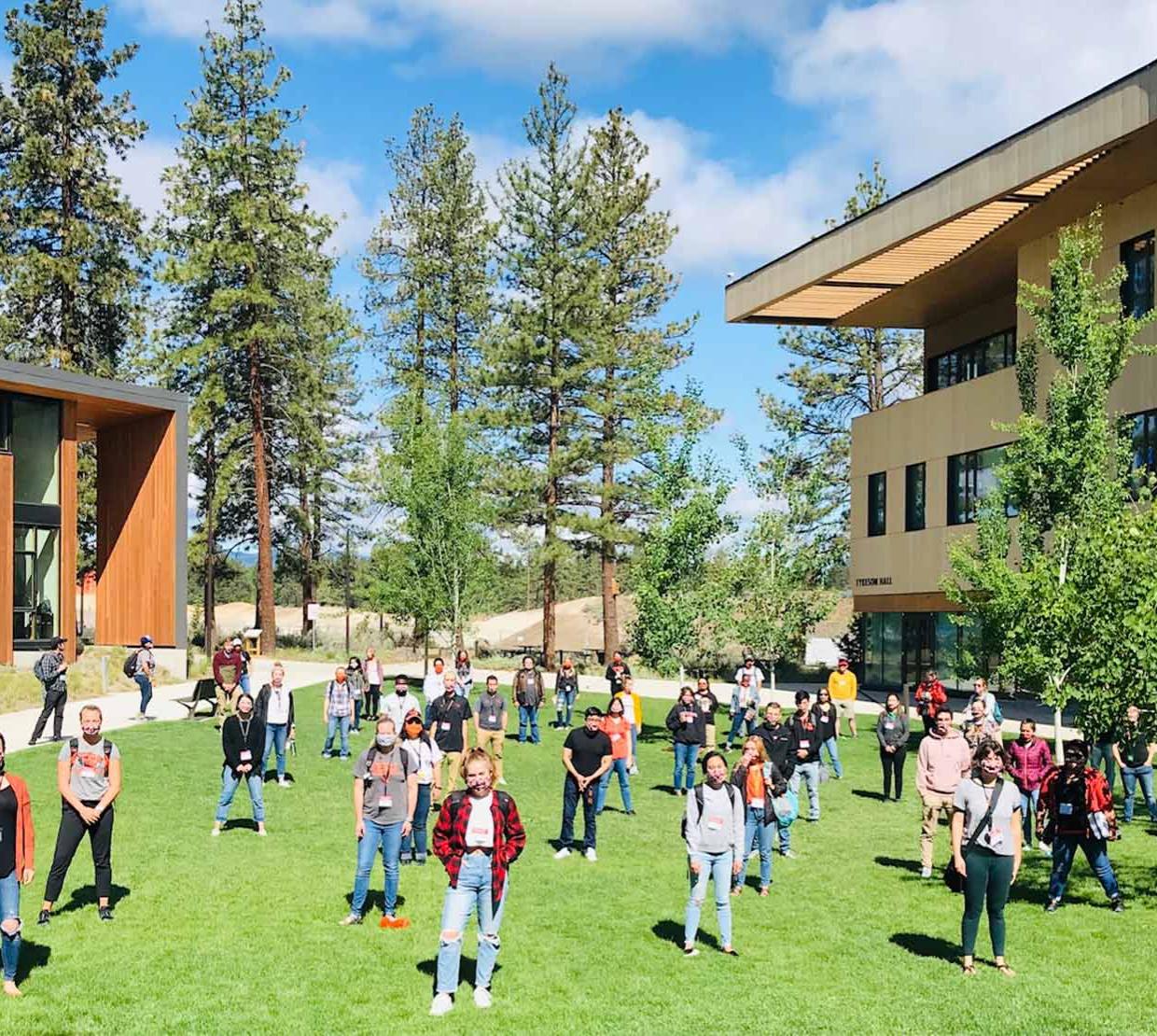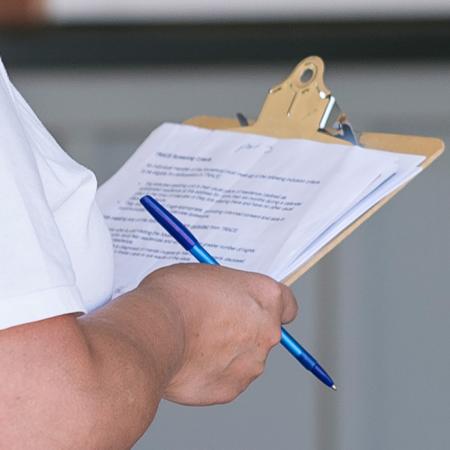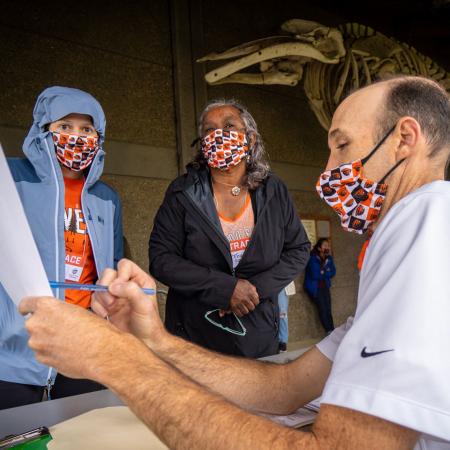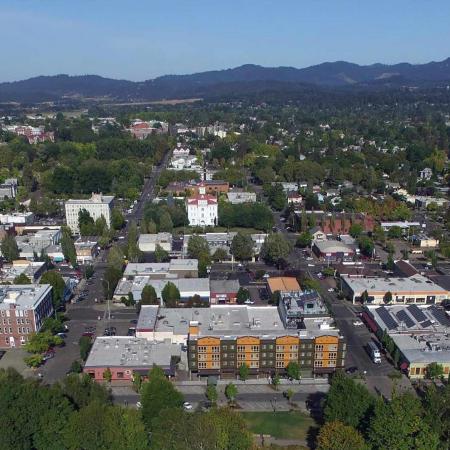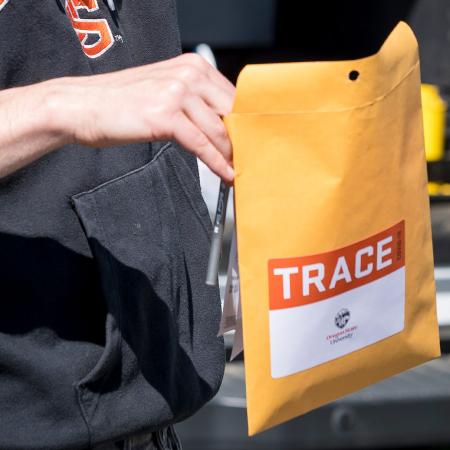BEND, Ore. – Results from two days of door-to-door sampling by Oregon State University and OSU-Cascades suggest that one person in 1,000 in the Bend community during the weekend of May 30-31 had the novel coronavirus that causes COVID-19.
“This level of prevalence is consistent with Bend residents being careful about social distancing, wearing masks and staying home prior to Phase 1 reopening in Deschutes County,” said project leader Ben Dalziel, an assistant professor in OSU’s College of Science. “One in 1,000 is low, but the virus is still in the population and we know it is readily transmitted.”
The study, Team-based Rapid Assessment of Community-Level Coronavirus Epidemics, known as TRACE-COVID-19 for short, began in Corvallis and expanded to Bend in collaboration with OSU-Cascades and Deschutes County Health Services.
In Bend, 30 two-person TRACE field teams worked in 30 neighborhoods, leading to the sampling of 615 people. A total of 342 households or 68% of households visited agreed to participate in TRACE. None of the community members who participated in the May 30-31 sampling tested positive for SARS-CoV-2, the virus that causes COVID-19. With 100,421 residents, Bend represents slightly more than half of Deschutes County’s population.
“While this low level of prevalence is good news, residents should continue to act with caution,” said project co-leader Jeff Bethel, an associate professor in OSU’s College of Public Health and Human Sciences and part of the TRACE leadership team. “The larger the number of other individuals that someone comes in contact with, the greater the likelihood that at least one of them is infected. These results are consistent with the emerging knowledge that there can be a low level of prevalence in the general population at the same time there are clusters of infections in higher-risk environments.”
Becky Johnson, vice president for OSU-Cascades, said the prevalence testing provides valuable in-the-moment data.
“As Bend and other communities continue to reopen, it is important that we maintain watch on the prevalence of COVID-19 in Central Oregon,” Johnson said. “I am happy that OSU-Cascades and many of our students are contributing to this ongoing public health awareness.”
The same weekend that TRACE field workers canvased Bend, public works staff collected sewage samples for a related coronavirus prevalence study being led by researchers from the OSU College of Engineering. Those data are still being analyzed.
TRACE leaders are hoping to schedule another round of sampling Bend.
Dr. George Conway, director of Deschutes County Health Services, said TRACE sampling in Bend provided a valuable sense of whether COVID-19 infections are widely distributed or at a high rate in the general population.
“These results from Bend are reassuring,” Conway said. “However, COVID-19 cases and case clusters continue to occur in Bend and elsewhere in Deschutes County. We strongly recommend that residents, visitors and workers continue to be vigilant in maintaining physical distance. In circumstances where you cannot maintain a distance of 6 feet, wear a cloth face covering to protect others and wash your hands frequently, or use hand sanitizer where water and soap are not available. If you feel ill, please stay home and contact your primary health care provider.”
Corvallis sampling began the weekend of April 25-26 and continued the subsequent two weekends. The fourth weekend of sampling in Corvallis, originally scheduled for May 16-17, will take place Saturday and Sunday, June 13-14, to help determine if the easing of stay-at-home orders leads to a jump in the prevalence of the virus in the Corvallis community.
Prevalence in Corvallis ranged between one and two per 1,000 through the first three weeks of the project, which is consistent with residents adhering to Gov. Kate Brown’s Stay-Home-Save-Lives policy.
The TRACE study is a collaboration of five OSU colleges – Science, Agricultural Sciences, the Carlson College of Veterinary Medicine, Engineering, and Public Health and Human Sciences – in partnership with Deschutes County Health Services and the Benton County Health Department.
The study is being funded by OSU and grants from the David and Lucile Packard Foundation and PacificSource Health Plans, and has been aided by work from the OSU Foundation and the OSU Alumni Association. The diagnostic testing component of TRACE operates through a partnership between the Oregon Veterinary Diagnostic Laboratory, which is located at OSU, and Willamette Valley Toxicology.
At each home visited by TRACE field workers, members of the household are invited to participate in the study. Those who choose to take part are asked to provide information such as their name and date of birth; to fill out a simple consent form; and to answer a few confidential, health-related questions.
Participants are given a nasal-swab test kit that they administer to themselves inside their home and their minor children if they want them to take part. The field staff wait outside, and the participants leave the completed test kits outside their front door. Field staff maintain a safe distance at all times and do not enter anyone’s home. The safety of participants and TRACE field staff is a key part of the study’s research design.
The tests used in TRACE-COVID-19 collect material from the entrance of the nose and are more comfortable and less invasive than the tests that collect secretions from the throat and the back of the nose.
The field workers leave participants with information about the project and how they will receive their results – available in seven to 10 days – as well as health guidance from their county health department and the Centers for Disease Control and Prevention. Participants in the study are sent their results and those of their minor children by secure email with receipt by standard mail delivery as a backup. Everyone’s personal information is safeguarded.
For more information TRACE, visit the TRACE-COVID-19 website. The site includes a list of frequently asked questions.
COVID-19, first reported to the World Health Organization on Dec. 31, 2019, has been confirmed in more than 7 million people worldwide and has killed more than 400,000 people. In the United States, there have been nearly 2 million reported cases – including nearly 5,000 in Oregon – and more than 110,000 deaths nationwide. As of June 9, Deschutes County has had 134 cases and no fatalities.
This story was originally posted by the Oregon State University newsroom.
